
2021 Launches: Top Five Scooters
- Dec 27, 2021
- Views : 19500

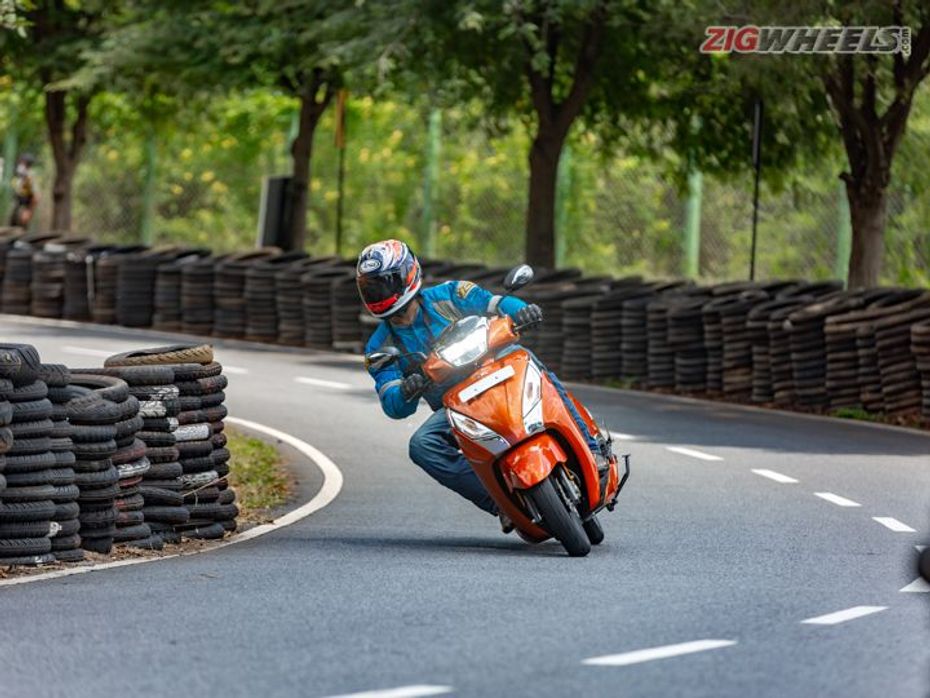
Scooters in India come in two distinct varieties - sporty scooters and commuter scooters. Now TVS already makes a great sporty 125cc scooter in the form of the Ntorq, which we simply love. And they make a great commuter scooter in the form of the Jupiter, but this plays in the 110cc class. So it’s surprising that TVS hasn’t made a family-oriented 125cc scooter till now. The new Jupiter 125 is meant to fill just that niche, one that makes perfect sense in our heads. After all, the second best-selling scooter in India, more often than not, is the Suzuki Access 125. But taking on the likes of the Access, or even the Honda Activa 125 is no mean feat. So has TVS done enough with the Jupiter 125 for family scooter buyers to sit up and take notice?
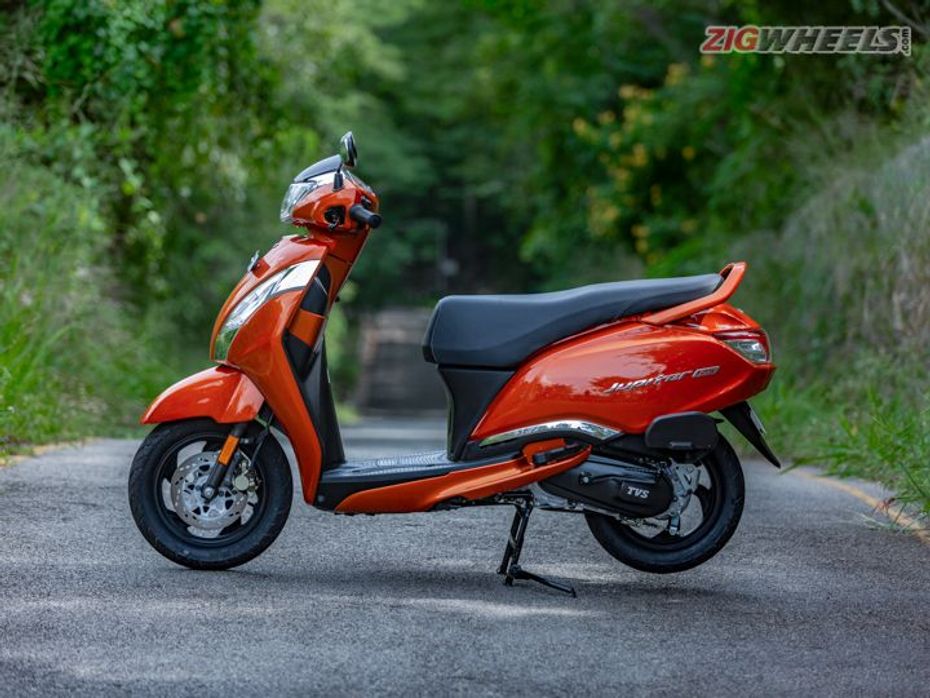
Comfort & Convenience
Since this is meant to be a family-oriented scooter, let’s focus on things that matter most for commuters - comfort and convenience. Now, the Jupiter 125 boasts the longest seat in its class, which is also a whole 65mm longer compared to the Jupiter 110 (an extra 25mm on the rider’s side and 40mm on the pillion side). And to top it off, it’s quite flat, with padding that’s neither too soft nor too firm. So in theory, it should be rather comfortable for long commutes, even if both rider and pillion are built much larger than the average Indian. At 765mm, it’s supposed to be the lowest seat height in class as well, so should be great even for shorter riders. But the seat is a little on the wider side, so those with thick thighs will need to shift forward to get their feet down easily. For taller riders, the Jupiter 125 will prove to be especially easy to ride, since the handlebar is set quite high and won’t foul with their knees when taking U-turns.
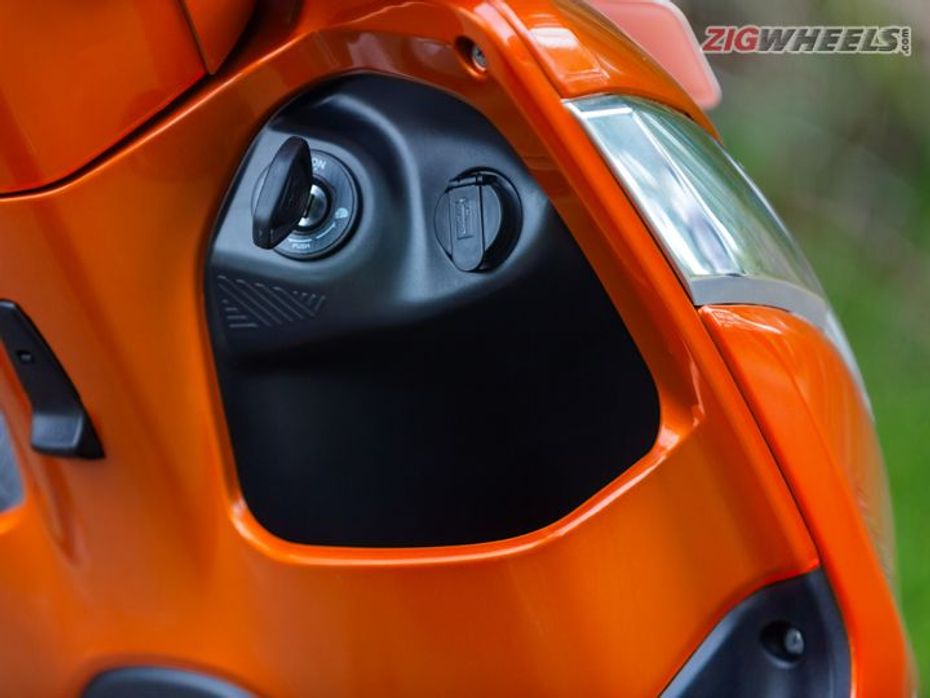
Coming to convenience, there’s tonnes of space on the floorboard, whether it’s just for someone with large feet, or for someone carrying a gas cylinder. Heck, carrying a gas cylinder was one of the briefs during the Jupiter 125’s design phase. Even the apron gets a large 2-litre cubby hole that can swallow your mobile phone, wallet, or even a water bottle. But there’s no lid, so you won’t be able to leave anything in there permanently. What you do get there though, as an option, is a USB charger for your phone. But one of the most impressive things about the Jupiter 125 is its class-leading 33 litres of underseat storage. Technically, it’s big enough to even fit two helmets, as long as they’re your typical ISI-certified ones. And in this storage area, you get an LED light as standard.
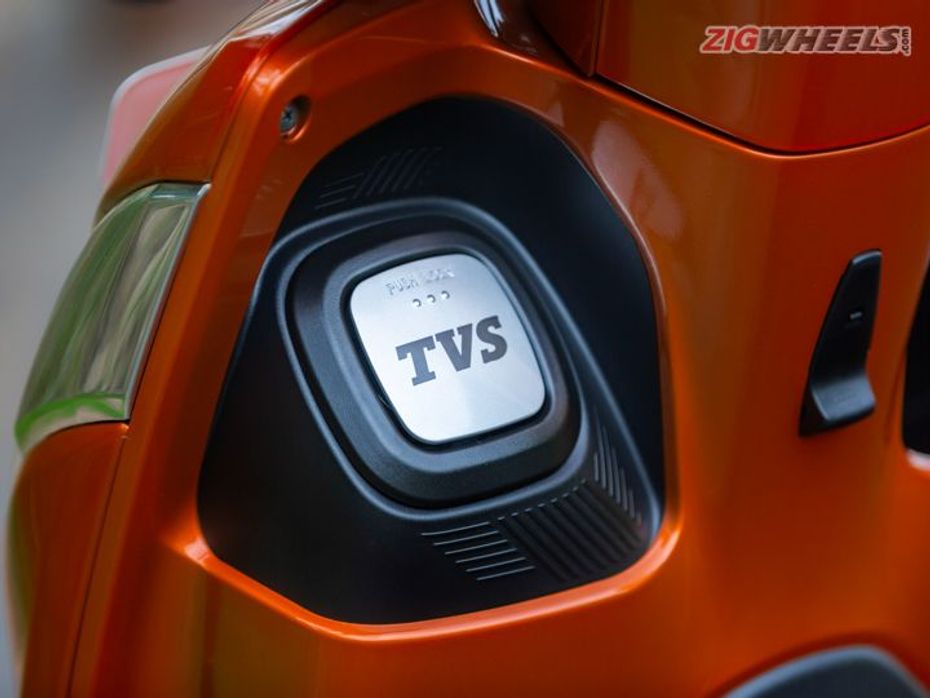
the automobile community
TVS engineers have been able to free up a lot of underseat storage space by moving the Jupiter 125’s 5-litre fuel tank under the floorboard. And before you say that this might be a hazard in case of a crash, TVS assures us that the fuel tank is made of metal, has a bash plate underneath, and is located between the chassis spars, so it should be perfectly safe. The filler for this tank too is located on the front apron, and can be opened using the multi-function ignition key slot. So fuelling up at a petrol pump will not require riders to get off the scooter at all.
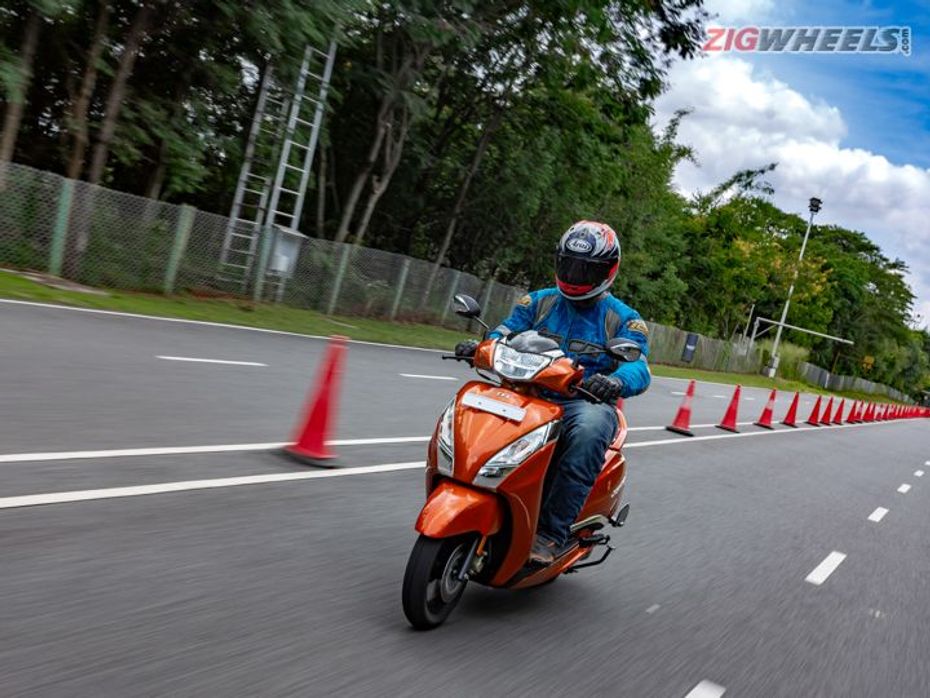
Ride & Handling
The other advantage of having the fuel tank under the floorboard is that it lowers the Jupiter’s centre of gravity and also moves more mass towards the centre of the bike. Thanks to this low centre of gravity, the Jupiter 125 does feel quite stable when leaned over. With a kerb weight of 109kg, which is perfectly middle-order for this segment, it feels quite nimble too. It is quick to turn, like most scooters are, but doesn’t feel twitchy when you do tip it in. This is also down to the fact that it’s running on 12-inch wheels at both ends, which helps with stability, even though the tyres, both sized 90/90, are a little on the skinnier side.
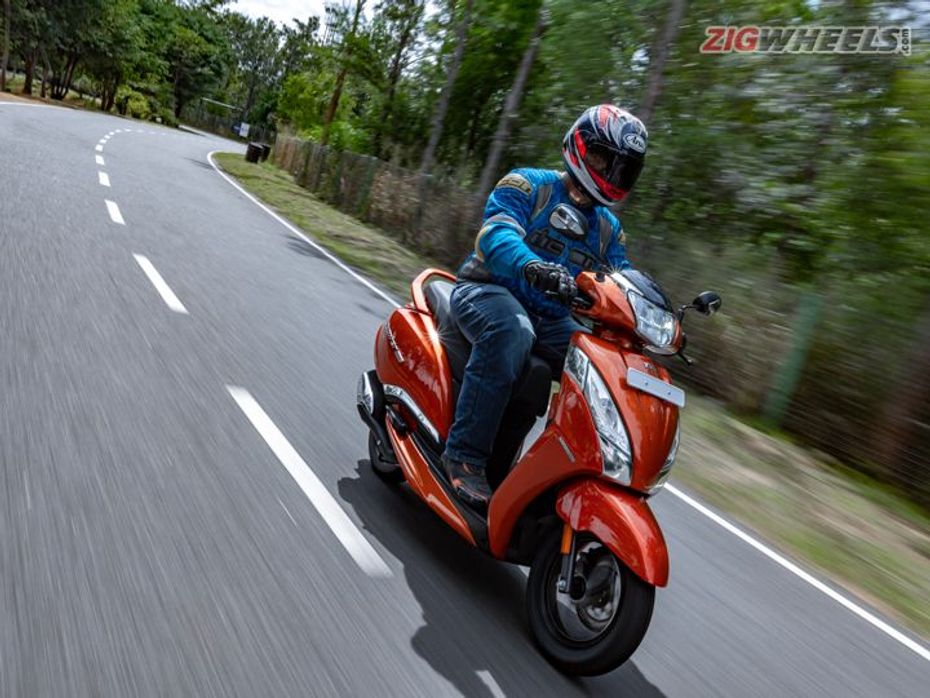
Connecting these 12-inch wheels to the scooter is a telescopic fork at the front, and a segment-first gas charged shock at the rear, the latter of which also gets 3-step preload adjustability (that too without the need for any tools). Now we’ve said this multiple times in the past that the TVS track isn’t the best place to test a bike’s ride quality - it’s just too smooth. But we did take the Jupiter 125 over the Belgian Pavé section of the test track and the scooter handled it like a champ, as long as you didn’t ride too fast over it. That said, we’ll still reserve full judgement about the Jupiter’s ride quality for when we get it for a proper road test.
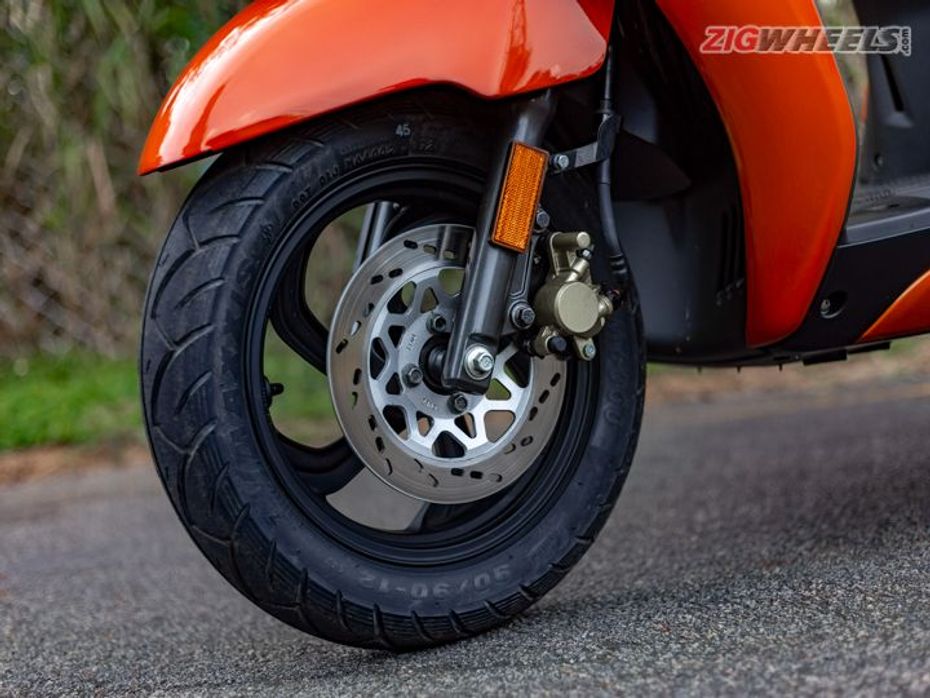
The version of the Jupiter 125 we rode came with the optional 220mm front disc brake, which seems to be the same as that on the Jupiter 110. But it provided excellent bite, and the feel at the lever was really good too. And of course, the scooter comes equipped with synchronised brakes as standard.

Engine & Performance
And finally we come to the engine. The Jupiter is powered by a brand new 124.8cc single-cylinder air-cooled motor that seems to share bore and stroke figures with the Ntorq’s mill. But unlike the Ntorq’s 3-valve head, this one is running a 2-valve setup. So it doesn’t deliver the same top-end performance as the Ntorq, instead focusing on low- to mid-range grunt. To put things into context, it makes 8.3PS and 10.5Nm, compared to the Ntorq Race XP’s 10.2PS and 10.8Nm. But with almost 2Nm more torque on tap compared to the Jupiter 110, the Jupiter 125 feels a lot more sprightly, and accelerates quite strongly from zero to 60kmph. After that, though, the acceleration tapers off. We did see an indicated 90kmph during our test ride, but it took a little time to get there. In that crucial speed zone of 20 to 60kmph, though, the Jupiter 125 feels quick enough. And it’s quite refined too: there are very few vibes to speak off, and they only creep into the floorboard a little past 70kmph.
In terms of fuel efficiency, TVS claims that the Jupiter 125 will be among the most efficient scooters in the 125cc segment. To help it achieve high efficiency, it also comes with an automatic start stop-system. While TVS didn’t share exact numbers, we expect this Jupiter to deliver around 55-60kmpl.
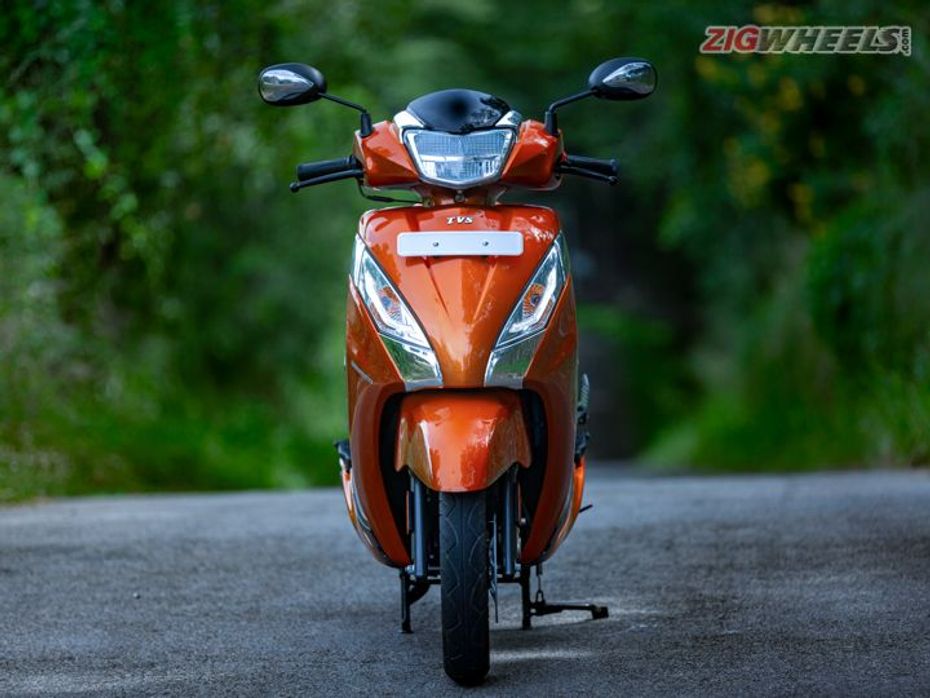
Design & Build Quality
The Jupiter 125 certainly isn’t going to win any beauty contests, but still has some interesting design touches such as the split LED headlight and the LED DRLs that cut through the bulb-type front indicators. And even though the tail light isn’t LED, it does look quite smart. This top-end version of the scooter we rode also comes with some chrome bits on the front and the side, and also gets diamond cut alloy wheels which look quite sporty. Fit and finish levels are top-notch too, and we especially liked the quality of the switchgear. A lot of family scooter buyers will also be happy to know that the side panels as well as the front fender are made from metal, so these should be quite durable. While the Jupiter 125 does look particularly striking in this shade of orange, the overall design is more conservative than anything else. But this isn’t a bad thing as it’s what most buyers in this segment are looking for.
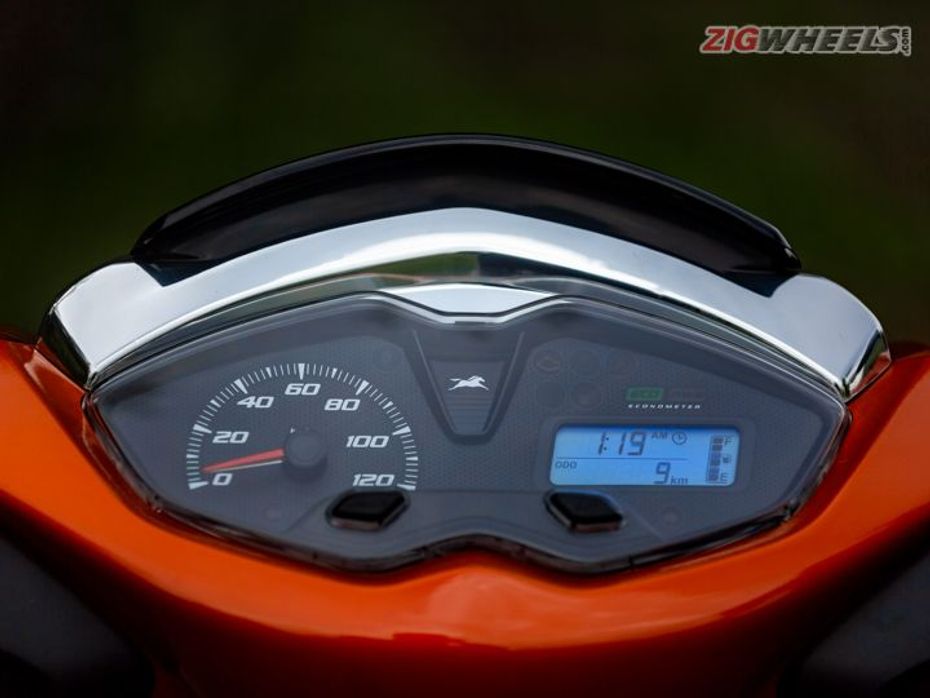
As for the instrument cluster, you get an analogue speedometer along with an LCD display that shows a fuel gauge, two trip meters, a clock and even fuel efficiency readouts. No bluetooth connectivity here, but TVS says that this might be added later.
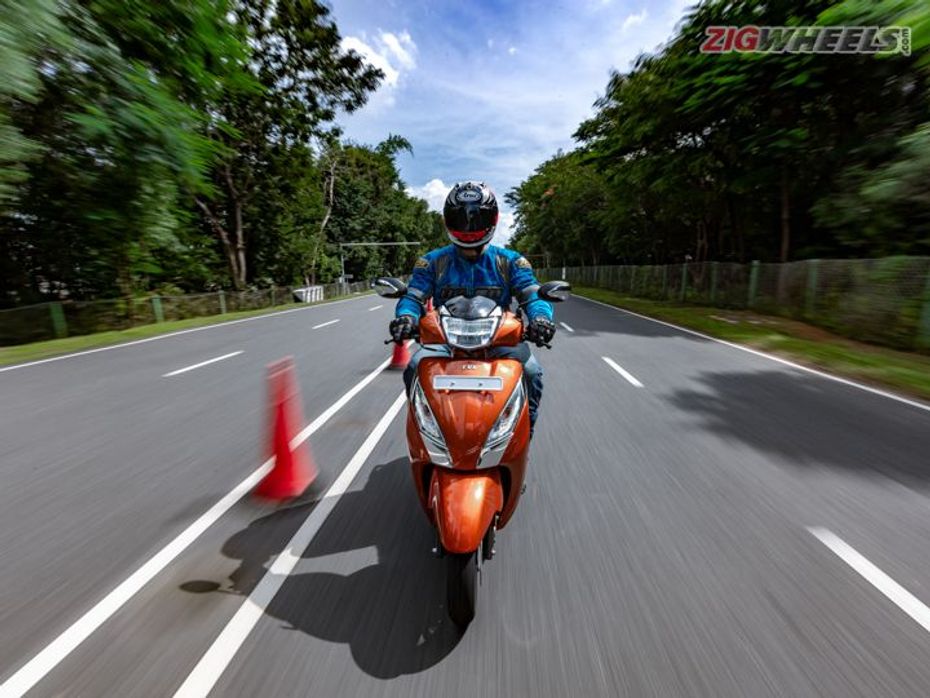
Final thoughts
At first glance, the Jupiter 125 does everything you’d expect from a 125cc family scooter, and some more. It’s got decent performance, handles well and it’s very comfortable too. But where it really stands out is with its comfort and convenience features, most of which are segment-leading, and almost make you wonder why no one else has implemented them before. As for the pricing, the base model with steel wheels and a front drum brake starts at Rs 73,400 (ex-showroom Delhi), which is almost on par with segment favourites such as the Suzuki Access 125 and the Honda Activa 125. Given that the Jupiter 125 comes better equipped at this price, we think it’s better value for money, and that might be enough to convince family-scooter buyers to give this newcomer a shot over its tried and tested competition.
|
Variant |
Ex-showroom Price |
|
Drum/Sheet Metal Wheel |
Rs 73,400 |
|
Drum/Alloy Wheel |
Rs 76,400 |
|
Disc/Alloy Wheel |
Rs 81,400 |
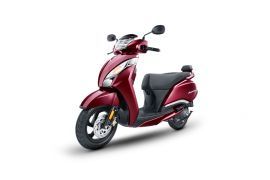

2021 Launches: Top Five Scooters

BREAKING: The Apache RTR 160 4V Now Gets Riding Modes!

EXCLUSIVE: TVS Retron Juicy Details Revealed

ZigOpinion: Why The TVS Retron Makes More Sense In India Than The...

2024 TVS Jupiter 110 Road Test Review: The Best In Class?

2024 TVS Jupiter 110 First Ride Review: A Modernized Upgrade

Honda Activa 6G Review: Six Key Takeaways

Uno Minda Engine Oil For TVS NTorq 125 (BS3): 4,000km Review

Uno Minda Engine Oil For TVS NTorq 125 BS3 Review: Introduction

2024 Hero Destini 125 First Ride Review
 Honda Activa 125
Honda Activa 125
 Suzuki Access 125
Suzuki Access 125
 TVS Jupiter
TVS Jupiter
 Honda Activa 6G
Honda Activa 6G
 TVS NTORQ 125
TVS NTORQ 125
India's largest automotive community
 TVS NTORQ 125
Rs. 86,841
TVS NTORQ 125
Rs. 86,841
 TVS Jupiter
Rs. 74,691
TVS Jupiter
Rs. 74,691
 TVS iQube
Rs. 1.07 Lakh
TVS iQube
Rs. 1.07 Lakh
 TVS XL100
Rs. 44,999
TVS XL100
Rs. 44,999
 TVS Scooty Zest
Rs. 74,476
TVS Scooty Zest
Rs. 74,476
 TVS Apache RTR 160
Rs. 1.20 Lakh
TVS Apache RTR 160
Rs. 1.20 Lakh
 TVS Raider
Rs. 85,010
TVS Raider
Rs. 85,010
 TVS Ronin
Rs. 1.35 Lakh
TVS Ronin
Rs. 1.35 Lakh
 TVS Apache RTR 310
Rs. 2.49 Lakh
TVS Apache RTR 310
Rs. 2.49 Lakh
 TVS Apache RTR 160 4V
Rs. 1.24 Lakh
TVS Apache RTR 160 4V
Rs. 1.24 Lakh
 TVS NTORQ 125
Rs. 86,841
TVS NTORQ 125
Rs. 86,841
 Honda Activa 6G
Rs. 78,684
Honda Activa 6G
Rs. 78,684
 Suzuki Access 125
Rs. 81,700
Suzuki Access 125
Rs. 81,700
 TVS Jupiter
Rs. 74,691
TVS Jupiter
Rs. 74,691
 Honda Activa 125
Rs. 95,140
Honda Activa 125
Rs. 95,140